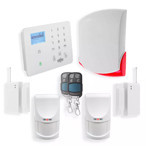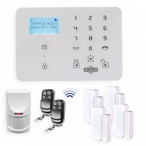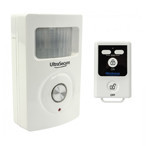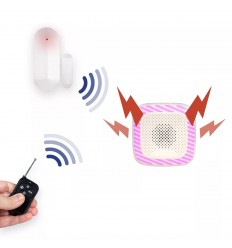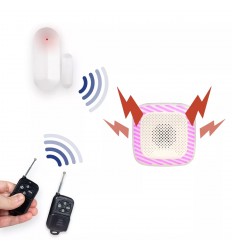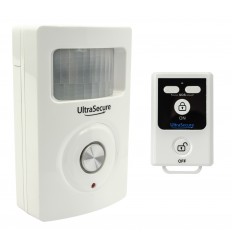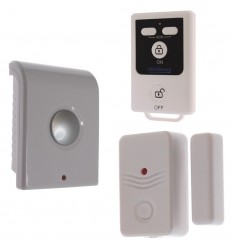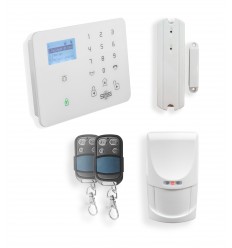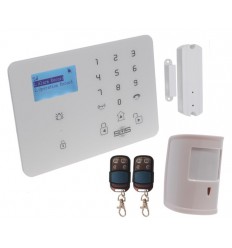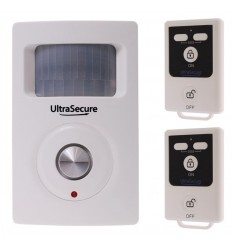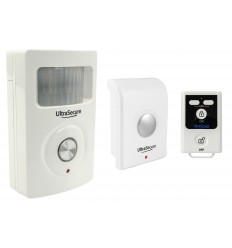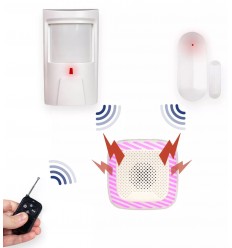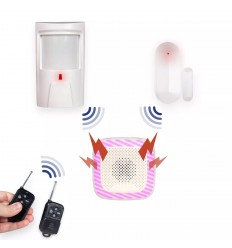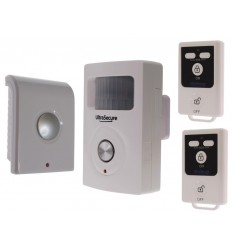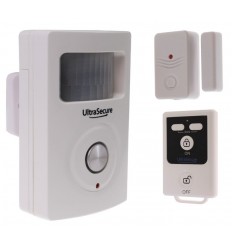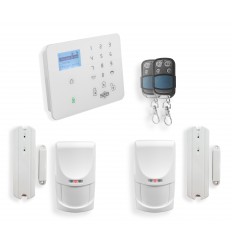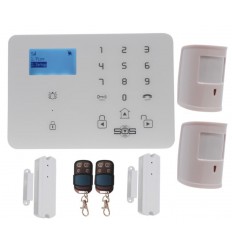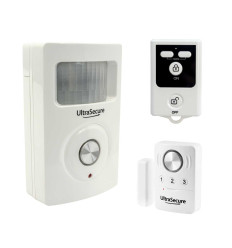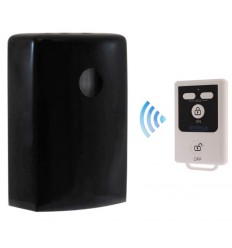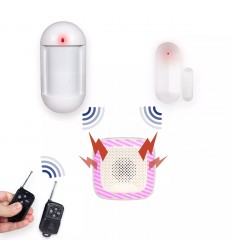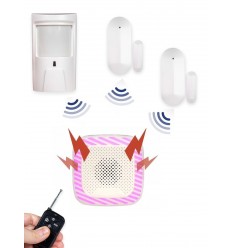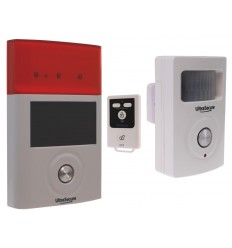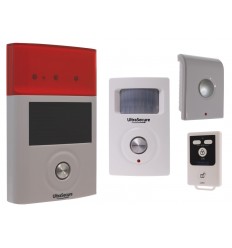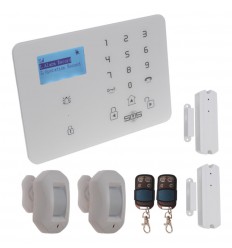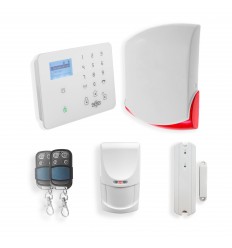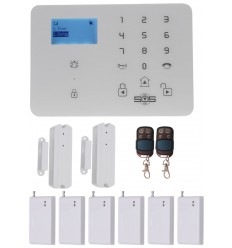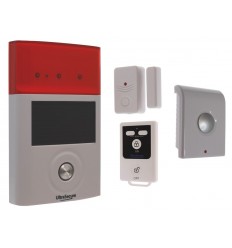No products
Prices are tax included
Product successfully added to your shopping cart
There are 0 items in your cart. There is 1 item in your cart.

Wireless Indoor Alarms
DIY Wireless Indoor 4G GSM & Bells Only Burglar Alarms
Discover our range of DIY wireless burglar alarms for home, family, and business security. Easy to install and use, these systems utilise advanced technology for reliable protection.
Choose from options like shed and garage alarms, bells only alarms for loud deterrence, and 4G GSM alarms for remote monitoring. We also offer solar and battery-powered models for eco-friendly solutions and pet-friendly alarms to reduce false alarms.
Secure your premises with our high-performance alarms. For expert advice, please contact us.
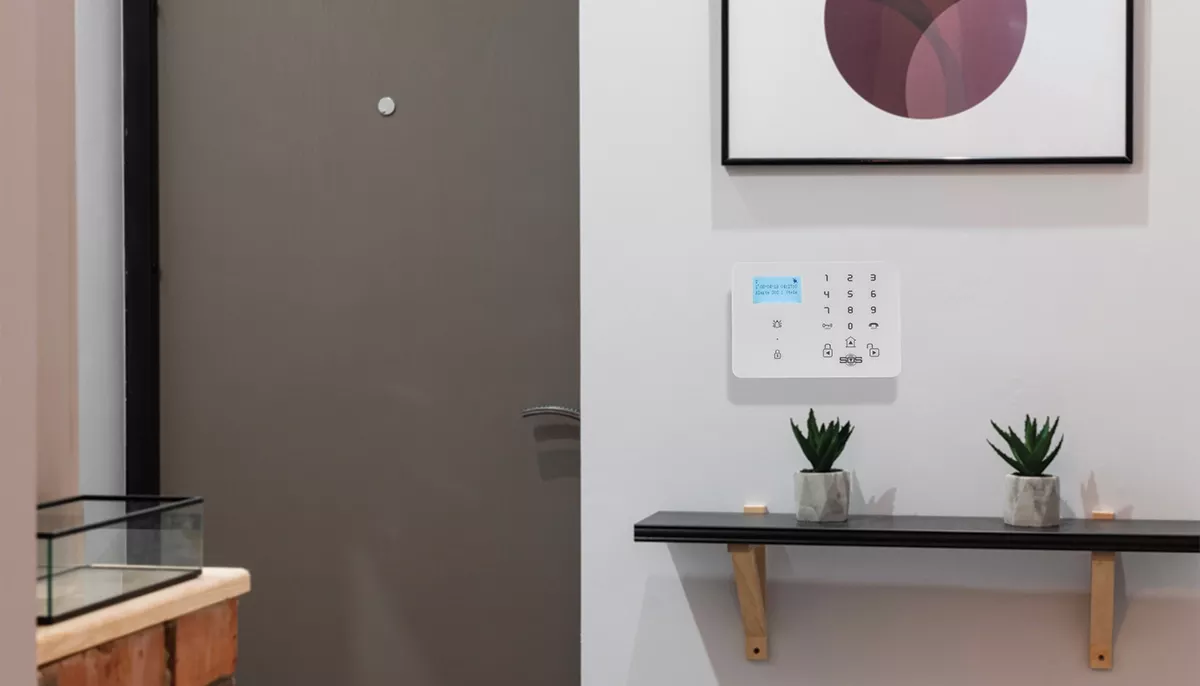
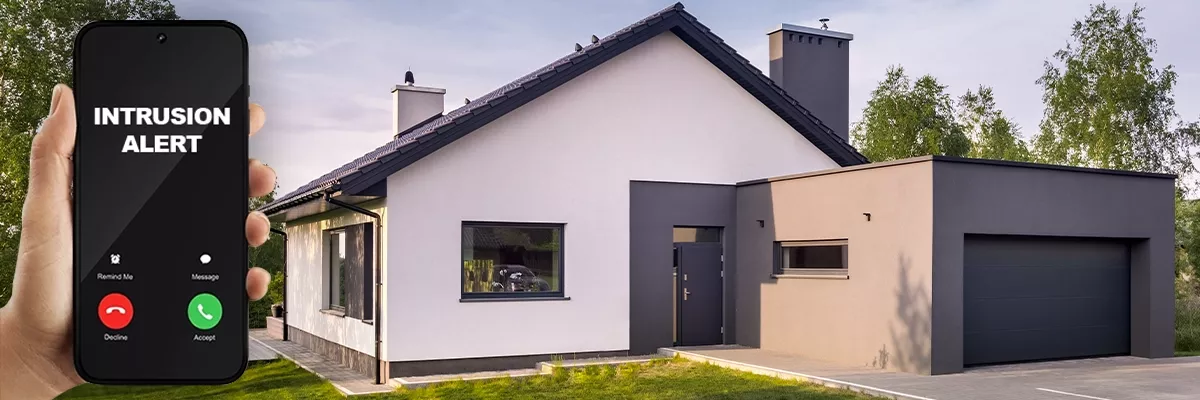
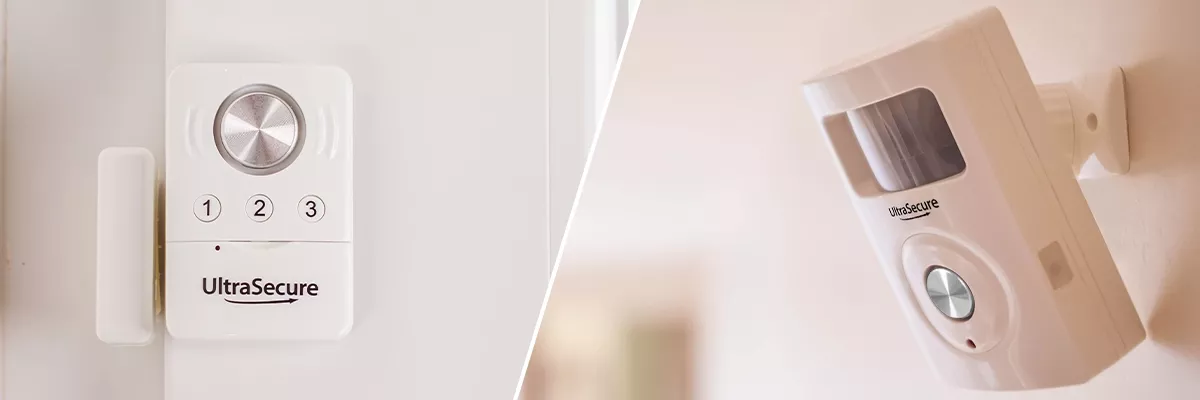
Browse through our subcategories:
- 1
- 2
-
Wireless Flat Alarm – 1 Door/Window Sensor with 1 Internal Siren & 1 Remote (HY)
Reference: 005-6400-50HY Wireless Door & Window Alarm: 1 x Battery Door or Window Magnetic Contact. 1 x Simple Plug in Siren Receiver. 1 x Remote Control. Ideal For Protecting Vulnerable Doors & Windows. Quick & Easy to Install (designed for DIY). 95 Decibel Siren. Receiver Plugs Directly into a Wall Socket (UK 3-pin & EU 2-pin). Fully Expandable. Indoor...
150,46 € -
Wireless Flat Alarm – 1 Door/Window Sensor with 1 Internal Siren & 2 Remotes (HY)
Reference: 005-6410-50HY Wireless Door & Window Alarm: Battery Door or Window Magnetic Contact. Simple Plug in Siren Receiver. Ideal For Protecting Vulnerable Doors & Windows. Quick & Easy to Install (designed for DIY). 95 Decibel Siren. LED Indication on Receiver Siren. Receiver Plugs Directly into a Wall Socket (UK 3-pin & EU 2-pin). Fully Expandable. Indoor...
177,51 € -
2-in-1 Wireless Alarm with Motion Detector, Built-in Siren & Remote Control (BT Range)
Reference: 007-0200-00Unique Battery Powered PIR Alarm with Built in 130 Decibel Siren, operated by Remote Control (up to 50 metres away) and can be used on its own or with various additional Sirens.
54,51 € -
Wireless Battery-Powered Alarm with Door/Window Sensor & Indoor Siren (BT Range)
Reference: 007-1000-00Very simple Wireless Door Alarm supplied with a Battery Powered Internal Siren & Remote Control, simple Alarm for use on many types of buildings including Sheds, Garages, Workshops, Boats, Caravans, Fuel Tanks etc.
62,35 € -
Wireless GSM Flat Alarm – 4G Control Panel with 1 PIR, 1 Door/Window Sensor & 2 Remotes (KP)
Reference: 005-5510-60Great value 95 zone 4G GSM KP9 GSM Wireless Alarm A Kit supplied with a Magnetic Door Contact, PIR & 2 x Remote Controls, an ideal Alarm for small premises or as a base to build a larger system to suit your own needs. Can be used via an APP.
429,07 € -
Wireless GSM Flat Alarm – 4G Control Panel with 1 Pet Friendly PIR, 1 Door/Window Sensor & 2 Remotes (KP)
Reference: 005-5580-00Pet Friendly 95 zone KP9 4G Wireless Alarm C Kit supplied with a Magnetic Door Contact, Pet Friendly PIR & 2 x Remote Controls, designed for applications with small animals. Can be used via an APP.
450,59 € -
2-in-1 Wireless Alarm with Motion Detector, Built-in Siren & 2 Remote Controls (BT Range)
Reference: 007-1450-00Unique Battery Powered PIR Alarm with Built in 130 Decibel Siren, operated by the 2 x Remote Controls supplied (from up to 50 metres away) and can be used on its own or with various additional Sirens.
77,10 € -
Wireless Battery-Powered Alarm with Motion Detector, 2 Sirens & Remote Control (BT Range)
Reference: 007-0300-00Popular Battery Powered 'Non GSM' Wireless PIR & Internal Siren Alarm System, both with 130 Decibel Siren's, armed & disarmed using remote control from up to 50 metres away. Ideal Alarm for Sheds, Garages, Boats, Holiday Homes.
72,40 € -
HY Wireless Burglar Alarm with Magnetic Contact & PIR
Reference: 005-6400-51HY Wireless Burglar Alarm: 1 x Battery Door or Window Magnetic Contact. 1 x Battery PIR. 1 x Remote Control. Simple Plug in Siren Receiver. Ideal For Protecting small Vulnerable Buildings. Quick & Easy to Install (designed for DIY). 95 Decibel Siren. Receiver Plugs Directly into a Wall Socket. Fully Expandable. Indoor Receiver can be used in a...
184,90 € -
Wireless Flat Alarm – 1 PIR with 1 Door/Window Sensor, 1 Internal Siren & 2 Remotes (HY)
Reference: 005-6420-50HY Wireless Burglar Alarm: Battery Door or Window Magnetic Contact. Battery PIR. Simple Plug in Siren Receiver. Ideal For Protecting small Vulnerable Buildings. Quick & Easy to Install (designed for DIY). 95 Decibel Siren. LED Indication on Receiver Siren. Receiver Plugs Directly into a Wall Socket. Fully Expandable. Indoor Receiver can be used in a...
211,95 € -
Wireless Battery-Powered Alarm with Motion Detector, 2 Sirens & 2 Remote Controls (BT Range)
Reference: 007-0290-00Popular Battery Powered BT Wireless PIR & Internal Siren Alarm System, both with 130 Decibel Siren's, armed & disarmed using the two remote controls supplied (from up to 100 metres away). Ideal Alarm for Sheds, Garages, Boats, Holiday Homes.
96,79 € -
Wireless Battery-Powered Alarm with Motion Detector, Built-in Siren & Door/Window Sensor (BT Range)
Reference: 007-1050-00Battery Powered PIR Alarm with Built in 130 Decibel Siren supplied with a Wireless Door/Window Contact, it is operated by Remote Control (up to 50 metres away) additional Detectors & Sirens can be added.
72,70 € -
Wireless GSM Flat Alarm – 4G Control Panel with 2 PIRs, 2 Door/Window Sensors & 2 Remotes (KP)
Reference: 005-5540-5595 zone KP9 4G GSM Wireless Alarm B Kit supplied with 2 x Magnetic Door Contacts, 2 x PIR's & 2 x Remote Controls, a typical Alarm for small premises or as a base to build a larger system to suit your own needs. Can be used via an APP.
486,32 € -
Wireless GSM Flat Alarm – 4G Control Panel with 2 Pet Friendly PIRs, 2 Door/Window Sensors & 2 Remotes (KP)
Reference: 005-5610-00Pet Friendly 95 zone KP9 4G Wireless Alarm D Kit supplied with 2 x Magnetic Door Contacts, 2 x Pet Friendly PIR's & 2 x Remote Controls, designed for applications with small animals. Can be used via an APP.
529,37 € -
Wireless Battery-Powered Alarm with Motion, Vibration & Door/Window Sensors & 2 Sirens (BT Range)
Reference: 007-0200-50Battery Powered BT PIR Alarm with Built in 130 Decibel Siren supplied with a Wireless Door/Window Contact (which also has a Built in optional Siren & Keypad) and is operated by using the Remote Control supplied (up to 50 metres away) additional Detectors & Sirens can be added.
94,64 € -
2-in-1 Wireless Alarm with Motion Detector (Rubber Hood), Built-in Siren & Remote Control (BT Range)
Reference: 007-1410-00Battery Powered PIR Alarm with Built in 130 Decibel Siren, operated by Remote Control (up to 50 metres away) and can be used on its own or with various additional Sirens. Supplied with a Rubber Hood which is designed to narrow the detection beam and make it less visible.
65,94 € -
HY Wireless Burglar Alarm with Magnetic Contact & Pet Friendly PIR
Reference: 005-6430-50HY Wireless Pet Friendly Burglar Alarm: Battery Door or Window Magnetic Contact. Pet Friendly Battery PIR. Simple Plug in Siren Receiver. Ideal For Protecting Vulnerable Buildings. DIY Quick & Easy to Install. 95 Decibel Siren. LED Indication on Receiver Siren. Receiver Plugs Directly into a Wall Socket. Fully Expandable. Indoor Receiver can be used...
236,34 € -
HY Wireless Burglar Alarm with 2 x Magnetic Contacts & 1 x PIR
Reference: 005-6410-57HY Wireless Burglar Alarm: 2 x Battery Door or Window Magnetic Contacts. 1 x Battery PIR. 1 x Remote Control. Simple Plug in Siren Receiver. Ideal For Protecting small Vulnerable Buildings. Quick & Easy to Install (designed for DIY). 95 Decibel Siren. Receiver Plugs Directly into a Wall Socket. Fully Expandable. Indoor Receiver can be used in a...
213,60 € -
Wireless Battery-Powered Alarm with Motion Detector, Built-in Siren & Solar-Powered Outdoor Siren (BT Range)
Reference: 007-0311-00Battery Powered Wireless PIR & External Solar Siren Alarm System, both with 130 Decibel Siren's, armed & disarmed using remote control from up to 50 metres away. Ideal DIY Alarm for Sheds, Garages, Garden Offices & Holiday Homes.
113,99 € -
Wireless Battery-Powered Alarm with Motion Detector, 2 Sirens & Solar-Powered Outdoor Siren (BT Range)
Reference: 007-0321-00Battery Powered Wireless PIR, Internal & External Siren Alarm System, all with 130 Decibel Siren's, armed & disarmed using remote control from up to 50 metres away. Ideal DIY Alarm for Sheds, Garages, Garden Offices & Holiday Homes.
138,76 € -
Wireless GSM Flat Alarm – 4G Control Panel with 2 Curtain PIRs, 2 Door/Window Sensors & 2 Remotes (KP)
Reference: 005-5640-00KP9 4G Wireless Alarm H Kit supplied with 2 x Magnetic Door Contacts, 2 x Wireless Curtain PIR's & 2 x Remote Controls, the unique PIR's can be used to avoid detection of Animals in many applications. Can be used via an APP.
514,30 € -
Wireless GSM Home Alarm – 4G Control Panel with PIR, Door/Window Sensor & External Siren (KP)
Reference: 005-5530-0095 zone KP9 4G GSM Wireless Alarm A Kit supplied with a H/D Wireless Siren, Magnetic Door Contact, PIR & 2 x Remote Controls, an ideal Alarm for small premises or as a base to build a larger system to suit your own needs. Can be used via an APP.
529,44 € -
Wireless GSM Flat Alarm – 4G Control Panel with 2 Door/Window Sensors, 6 Vibration Sensors & 2 Remotes (KP)
Reference: 005-5710-0095 x zone KP9 4G GSM Wireless Alarm Kit G, supplied with 2 x Magnetic Contacts, 6 x Vibration Sensors & 2 x Remote Controls, ideal for Pet Friendly environments. Can be used via an APP.
600,83 € -
Wireless Battery-Powered Alarm with Door/Window Sensor, Battery-Powered & Solar-Powered Sirens (BT Range)
Reference: 007-1010-00Wireless Door Alarm supplied with a Battery Powered Internal Siren, Solar Powered External Siren & Remote Control, simple Alarm for use on many types of buildings including Sheds, Garages, Workshops, Boats, Caravans, Fuel Tanks etc.
135,54 €
- 1
- 2

